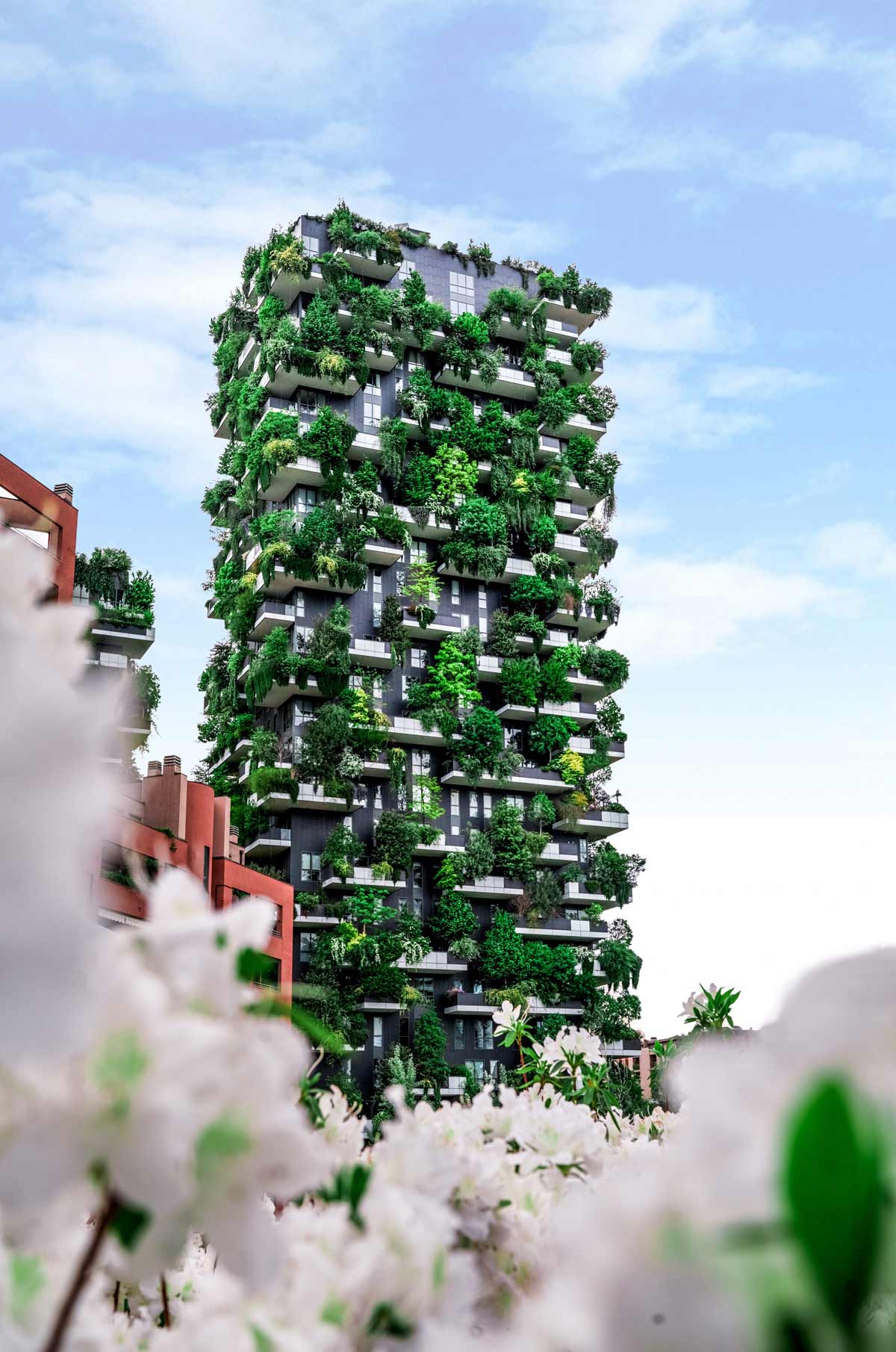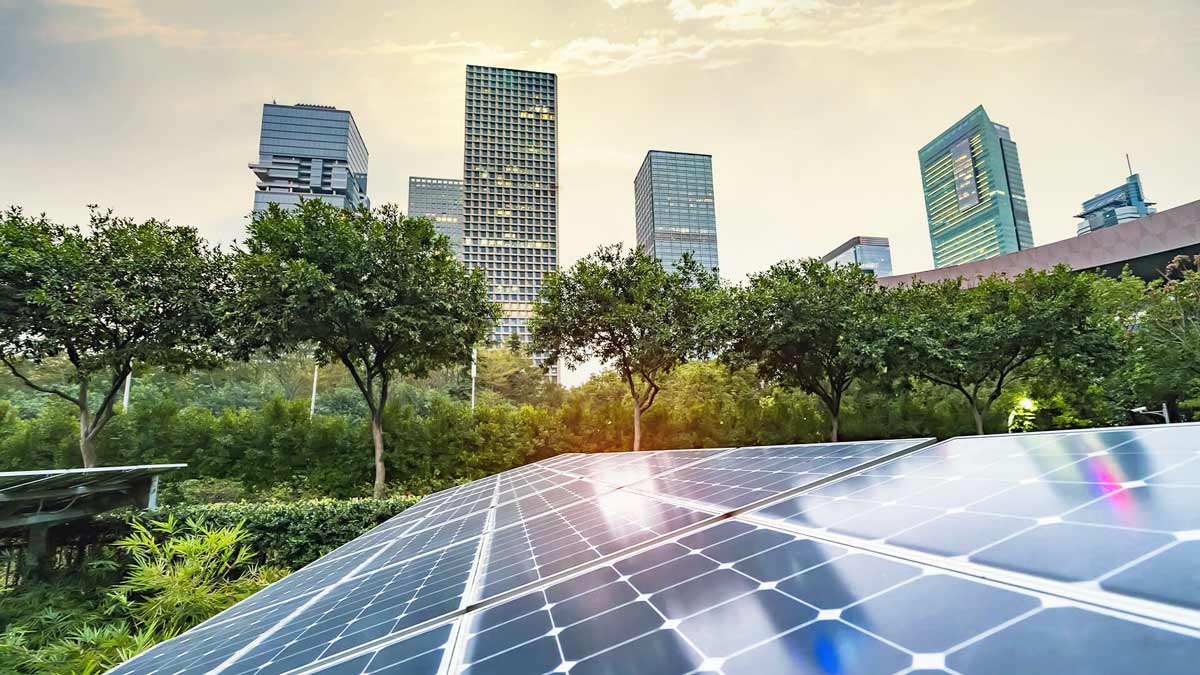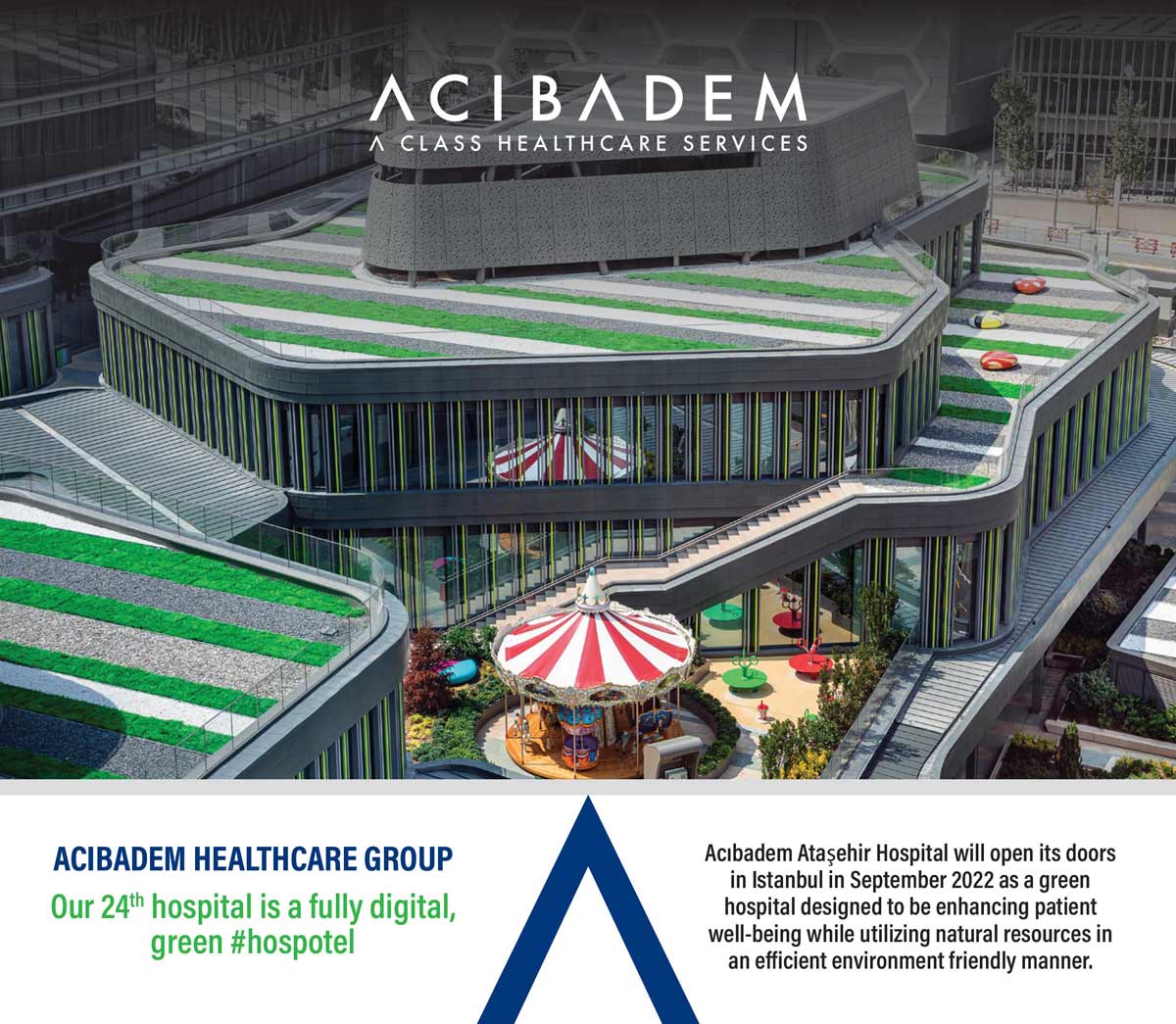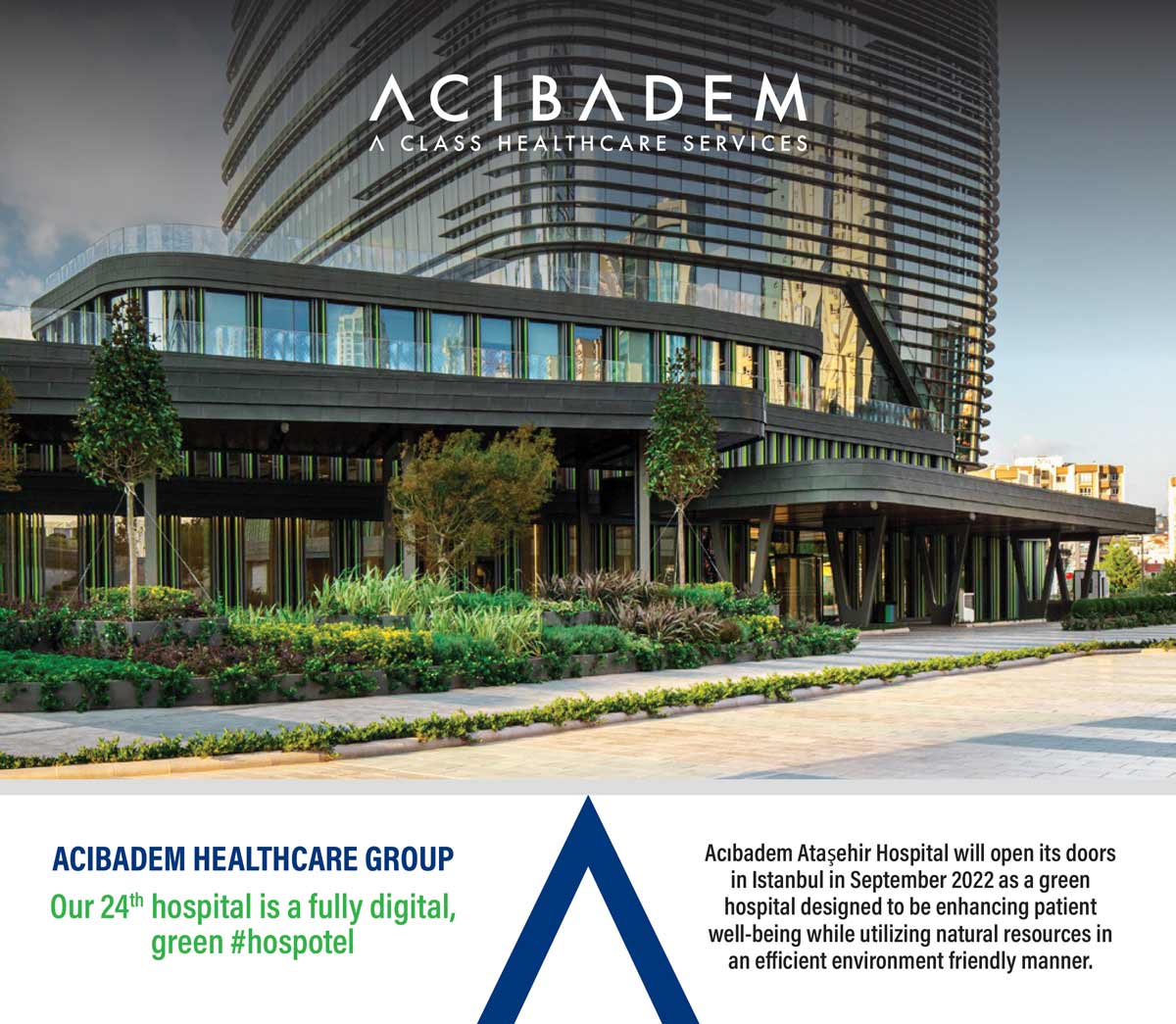A hospital provides treatment to patients based on their medical condition so they can resume their normal activity following the treatment. It does not aim to turn healthy people into sick ones. Hence, the green hospital concept was established, which is a hospital that promotes public health by continuously reducing its environmental impact and ultimately eliminating its contribution to the burden of disease. Green hospitals aim to save energy, conserve resources and be environmentally friendly. The focus is mainly on keeping people healthy, not just treating them when they are sick.
Mines, various facilities and heavy industries started searching for ways to mitigate the damage resulting from their work in order to protect humans and the environment. Consequently, the “Green Hospital” concept emerged and it aims to redefine how healthcare facilities are built to protect the environment while saving human lives.
The “Green Hospital” concept is based on providing healthcare without causing any harm to the environment and the healthcare worker. The importance of the green hospital lies in the fact that caring for the environment is no less than caring for the safety and well-being of patients. Thus, the idea of health safety expanded beyond the hospital in order to protect healthy people in their homes, workplace and parks, before they turned into patients, and then they will have to treat them with drugs and surgeries at an inestimable financial and moral cost.
Motives and Goals
In the health sector, the “Green Hospital” is a concept that is beginning to redefine how healthcare facilities are built to protect the environment while saving human lives. The greater the amount of energy consumed in a hospital, the greater the release of toxic wastes to the environment, causing damage which may put human lives at risk of other diseases and death.
What is the motive and purpose behind transforming hospitals into green hospitals?
The transformation of hospitals into eco-friendly buildings began by displaying the hazardous healthcare waste as well as harmful effects and then treating them one by one to reach the desired goal. This aims to ensure physical and psychological safety.

Hence began the sanitary disposal of medical waste and the effects resulting from the operation process on the one hand, and modifying practices in workplaces, patient rooms and hospital surroundings, in a way that brings psychological comfort to the patient without harming the healthy.
The shift to constructing sustainable healthcare facilities is largely centered on reducing the carbon burden in hospitals while ensuring that the occupants – staff and patients – are kept safe. More and more hospital administrators are beginning to involve architects in incorporating green concepts into hospital design.

In fact, according to a report by SBI Energy, green building renovations will experience a significant increase. Hospitals utilize more resources and produce more waste materials than most other commercial buildings of a similar size. Healthcare facilities consume more than 315 gallons of water per bed every day and an average US hospital consumes 103.600 Btu of natural gas per square foot annually.
Several design features have been initiated to achieve a green working environment. One of such features is the use of a low-flow plumbing system in a bid to save three million gallons of water every year for the state of California, which many experts have said may experience a long period of drought.
In a typical healthcare centre, lighting, water heating and space heating account for more than 65% of the energy consumption. Therefore, it remains fundamental for the construction of healthcare facilities to involve incorporation of green designs and concepts into the process to reduce the impact on the environment, cut down operational costs and increase energy efficiency. Hospital administrations have teamed up with designers, architects and construction companies to achieve the Leadership in Energy and Environmental Design, also called LEED. It is a system developed by the United States Green Building Council to rate a building and certify it as “green” based on design, construction and operations of the building.
Initiatives to achieve safety
Core measures adopted for green buildings include the use of energy-efficient lighting systems and medical equipment and use of tech-enhanced renewable energy systems. In addition to using energy more efficiently, hospitals are looking at how to create designs that allow more daylight exposure and natural ventilation into the environment. Improving the air quality is an essential element of designing a green hospital. Hospitals are exploring efficient ways of reducing the air content of toxins and contaminants across all corners of the building. The California Pacific Medical Center (CPMC), for example, has initiated several design features to achieve a green working environment.
Some international companies have started implementing an initiative to capture rainwater from the roof and use it to irrigate the landscaping, a measure, which they say, would save 180,000 gallons of drinkable water every year. In addition, the collected rainwater will also be used to operate cooling towers which the hospital uses for their air conditioning system.
For energy efficiency, CPMC has implemented a number of green design initiatives to achieve energy consumption at a level, 14 percent less than that of the average US hospital. Some of these design features include use of high-efficiency windows, super insulated roofs, use of sensors which automatically turn the lights off or on in a room depending on whether it is occupied. In addition to these, the patient rooms have been redesigned to allow more exposure to natural light and ventilation.
The Children’s Hospital of Pittsburgh, a division of the University of Pittsburgh Medical Center, has also adopted ways to cut energy consumption and minimize environmental pollutants in two of its buildings for which it received the LEED certification. The Children’s Hospital achieved this structural shift largely by using green materials and design instead of conventional systems. Some of the adopted green designs include systems for monitoring carbon dioxide levels in the atmosphere, use of wood products and renewable materials in its research building, water-efficient landscaping, minimizing on-site light pollution, elimination of hydrochlorofluorocarbons (HCFCs) and halons, and use of local and regional construction material to reduce transport burden. Hospital operations were also modified in light of the green initiative.
Some of the best operational practices adopted by the hospital to make it sustainable include the use of non-toxic cleaning chemicals and microfiber mops, discontinuation of use of mercury-containing solutions and medical devices, and use of paper products made from recycled material. The hospital also established a recycling program for lab chemical wastes of toxic solutions, as well as for paper, plastic waste, light bulbs, batteries, and cardboard.
Benefits and Returns
The World Green Building Council groups the benefits of green buildings into three – environmental, economic, and social benefits.
According to a report by the council, green buildings in Australia which received the “Green star certification” by the Green Building Council of Australia led to a 62% reduction in greenhouse gas emissions when compared with the average Australian building. On a global level, green buildings will save as much as 84 gigatonnes of carbon dioxide by 2050.
Green building also offers a lot of economic benefits globally, on a country level, and on a building level. Some of the benefits include cost savings on utility bills, lower costs of construction, a higher property value for estate developers, and job creation.
Building owners note, as reported in a report by Dodge Data & Analytics, that green buildings – whether newly constructed or renovated – created a 7 percent increase in asset value compared to traditional buildings.
Socially, the green building offers a number of benefits to occupants. Studies have shown that workers in green buildings reported a 101 percent improvement in cognitive scores.
In addition, employees in green buildings with well-ventilated offices reported sleeping an average of 46 minutes more every night. As healthcare evolves and administrators and providers explore strategies to promote better healthcare and lower administrative costs, constructing or renovating hospitals using green building design initiatives remains one of the core strategies, which no doubt has immense benefits not only for the hospital and immediate environment but for the world at large.
In this context, it is necessary to address the hospitals in the Gulf countries, where the existing ones are rapidly transforming into environmentally and human-friendly, and the ones under construction are adopting advanced construction strategies that take into account the health, aesthetics, technical and economic aspects, as they have become pioneering models for the future health and hospitalization concepts.
How to achieve this?
In order to achieve this paradigm shift to building green hospitals, hospitals have developed their business as well as their engineering methods. In Peru, for instance, more than 40 healthcare facilities are receiving training to join the Global Green and Healthy Hospital Network.
In a joint effort with the General Directorate of Disaster Risk Management and National Defense in Health (DIGERD) of the Ministry of Health of Peru, a total of 41 health establishments in that country began the process to join the Global Green and Healthy Hospitals (GGHH) network with the aim of lowering their greenhouse gas emissions and reducing their environmental footprint.
During three days, the Health Care Without Harm team in Latin America provided information on the different tools and resources that they can access as members of GGHH and the initiatives that they can join as part of the transformative process they are starting.
It is noteworthy that the education and engagement of people who work in the sector is integral to success. It should be noted that this training program seeks to offer technical assistance to the government of Peru in fulfilling its decarbonization commitments under the COP26 Health Program.
An agreement was also made between the Ministry of Health and Social Protection of Columbia and Health Care Without Harm to promote decarbonization of the Colombian health system. After signing a memorandum of understanding, they will work on a project for estimating the carbon footprint of health facilities.
The Ministry of Health and Social Protection of the Republic of Colombia and Health Care Without Harm announced the signing of a memorandum of understanding to carry out a project that will allow estimating the climate footprint of the Colombian national health system at the facility level.

The project focused on three main pillars:
- The identification of a representative sample of hospitals and health centers of the Colombian health system
- Training the teams of those establishments to use the Climate Impact Checkup tool developed by Health Care Without Harm
- Technical support so that the establishments that make up the sample can determine the size and composition of their climate footprint.
With the analysis of the data obtained from this exercise, an estimate was made of greenhouse gas emissions from the Colombian health sector at the national level. Based on these findings, a series of specific recommendations will be prepared, which will serve as input for the process of preparing the Comprehensive Sectoral Climate Change Management Plan (PIGCCS) for the Colombian health sector.
It is worth noting that with this project, Colombia will become the first South American country to carry out a comprehensive exercise to estimate the carbon footprint of its national health system, including both public and private establishments. More than 50 countries from different regions have committed to developing climate-resilient, sustainable and low-carbon health systems. Work is underway to design a schedule of activities and advance the implementation of the project to transform hospitals into environmentally friendly. The results are expected in early 2023.
… Thus, it is becoming evident day after day how great is the process of transforming hospitals into green buildings and how common this has become around the world after everyone noticed its human and material importance on health institutions, individuals and the entire world.

















